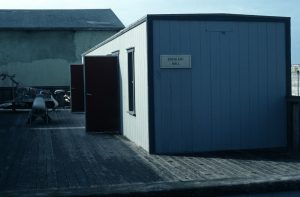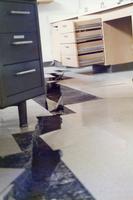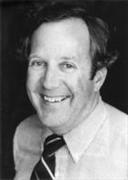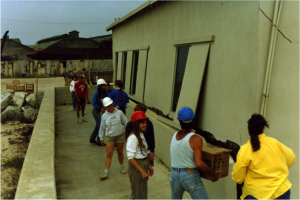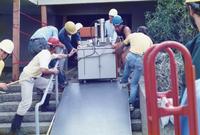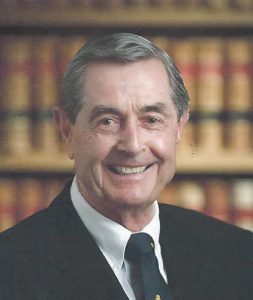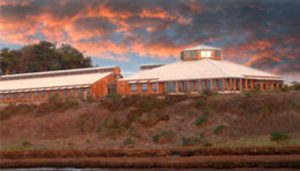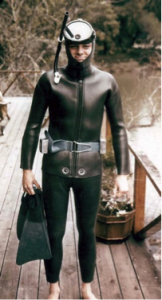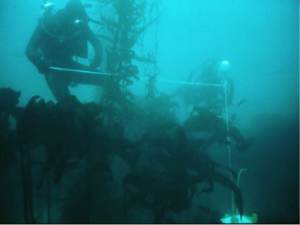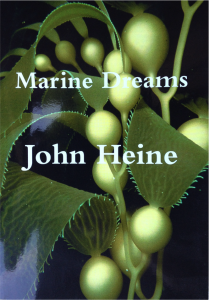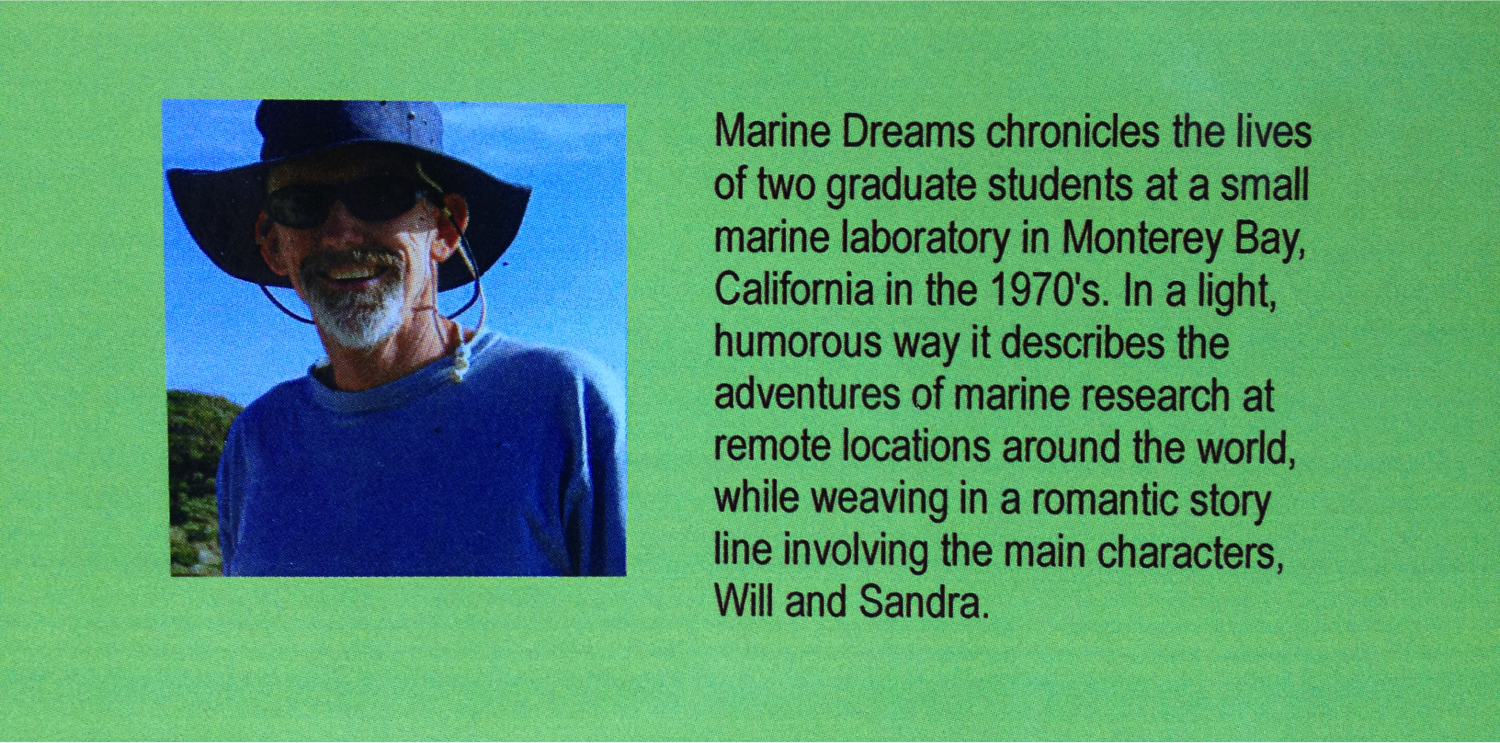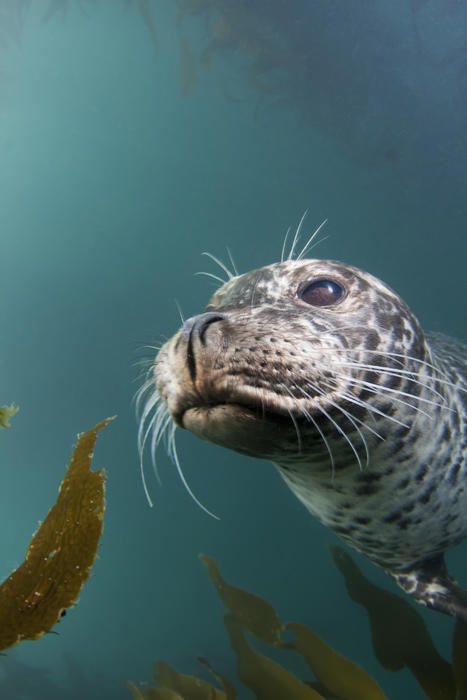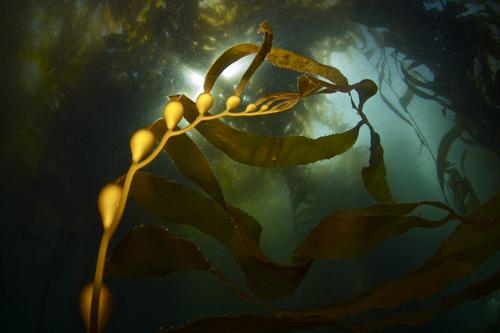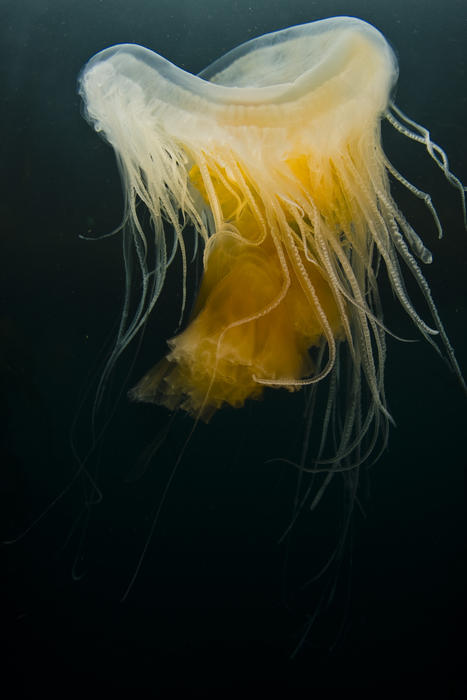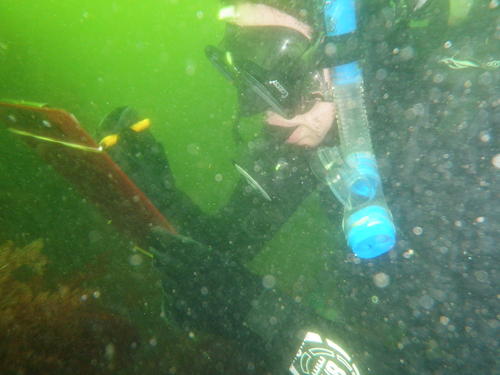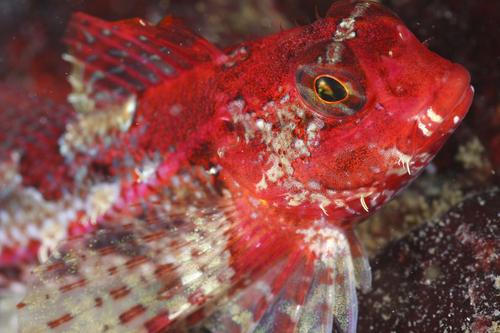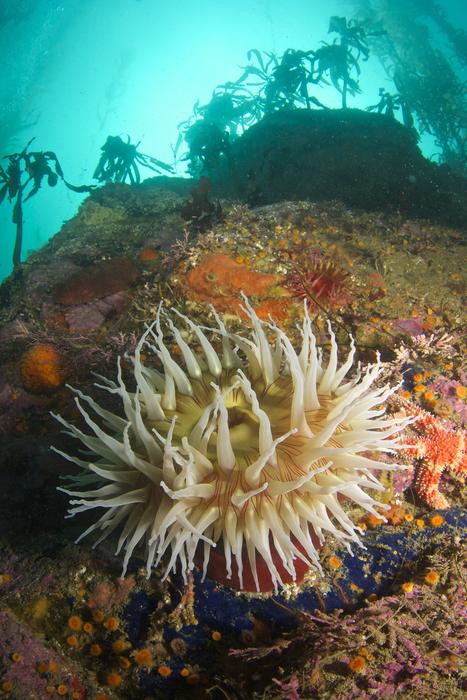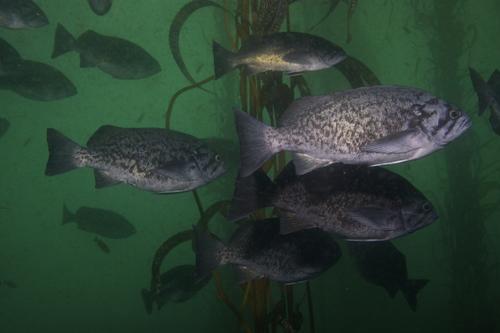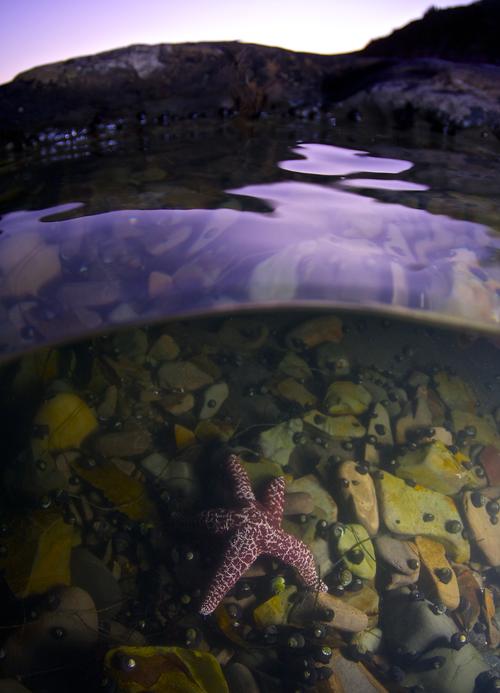By Jim Harvey (Additions from Kenneth Coale) (30 October 2015)
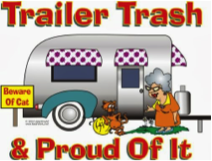
After the 1989 Loma Prieta earthquake had destroyed the main buildings of MLML, Faculty and Researchers scattered. Some moved in with the recently established MBARI in Pacific Grove, others filled the vaults of the abandoned bank in Castroville with museum samples, Administration moved into the Blue House, at one time MLML was scattered over 34 locations in Monterey County, including the abandoned sugar mill in Spreckles. In spite of this separation MLML continued to function as a multicellular organism, whose cells were strewn about. Classes were being held outside, or in other host facilities and e-mail was not yet a functioning communication tool. It was finally decided that MLML should consolidate and would temporarily relocate to Salinas. Initially Gail Fullerton (SJSU President at the time) arranged for MLML to be relocated to a new but unoccupied satellite campus of SJSU on Blanco Circle near the southern outskirts of Salinas. Within a year or so, it was obvious that MLML had to find a new home and luckily the Monterey County Office of Education was planning to place pre-constructed buildings in a lot right next to MLML’s temporary location on Blanco Circle. Thus the “MLML Salinas Trailer Park” years began in 1991 (Fig. 1).
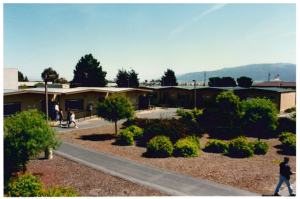
Some of us called our temporary laboratories the “Salinas Marine Lab” (SML), appropriately pronounced smell because of the morning odor of chocolate from a nearby Nestle factory and the aroma of fertilizers from the surrounding fields as onshore breezes started in the afternoon. Midday was a nice mix. The cemetery to the rear of the property kept one side of the property quiet, and reminded us of how lucky we were, whereas the nearby hospital truck traffic serenaded us with an anthropogenic cacophony. The sounds and smells of the place were unfamiliar and nothing about the location resembled a marine lab, except…. all marine Labs have trailers
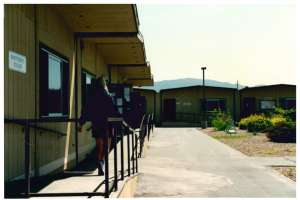
Much of the MLML equipment, materials and supplies were placed in storage at a warehouse on Vertin Avenue in Salinas. “Vertin” also contained the machine shop facilities because the trailers did not have the necessary power or space to support fabrication. The library, some shop equipment, research labs, administrative offices, and teaching classrooms were jammed into these pre-constructed buildings. A triple-wide served as our “seminar room”. Although most of the teaching and lab research was conducted at SML, a variety of trailers and other buildings back on the shores of Monterey Bay provided space for a classroom, the Benthic Lab, State Mussel Watch program, Sea Grant Marine Advisor, USGS, some of the Trace Metals lab, Diving, Marine Operations and others.
Functioning as a marine lab was now all the more challenging based on our existence in trailers, the distance of Salinas to the ocean, and the lack of running seawater. Commute times soared, especially for those commuting from Santa Cruz County. And how can it be called a “real” marine lab without the smell of rotting kelp on the beach. Many of the faculty had their offices in their lab trailers, so conversations with students or others were not that private. But the number of students applying to MLML and graduating did not decrease during the 10 + years that MLML remained in Salinas. In fact, MLML enrollment increased … a true testament to the “spirit” of MLML. Many students spent their entire MLML career at the trailers and still valued their education and experience. One great benefit was that we closer to good Mexican food.
My wife Mary reminisced about her impressions of working in the Ichthyology Trailer as a research associate (and former grad student) of Greg Cailliet during this time. Even though his office and laboratory space had been dramatically reduced by at least 50%, Greg thoughtfully and generously made room for everyone. The Ich Trailer included: three tiny offices (with doors) for Greg, Val Loeb, and Mary; a common space housing several graduate students elbow-to-elbow along a work bench, each one peering into their microscopes to sort plankton, or count daily growth bands in otoliths, or identify prey items from fish stomachs, while other students performed chemical analyses under an exhaust hood rigged up in the trailer. Even a past student returned to finish writing his thesis while in the trailer. It sounds like a hardship, but the experience must have made the students extra resilient and determined because most of them now are successful research professionals at universities and federal labs from Hawaii to Santa Barbara to Seattle and beyond.
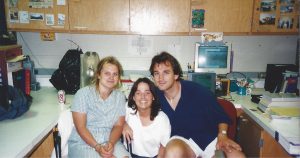
This existence lasted for another 10 years until MLML finally moved back into the new building on January 10, 2000, having stretched considerably, the definition of “temporary”.
We would love for you to comment and describe your experiences from the Trailer Daze.
Here is the picture to which Andrew refers in his Comments below:
